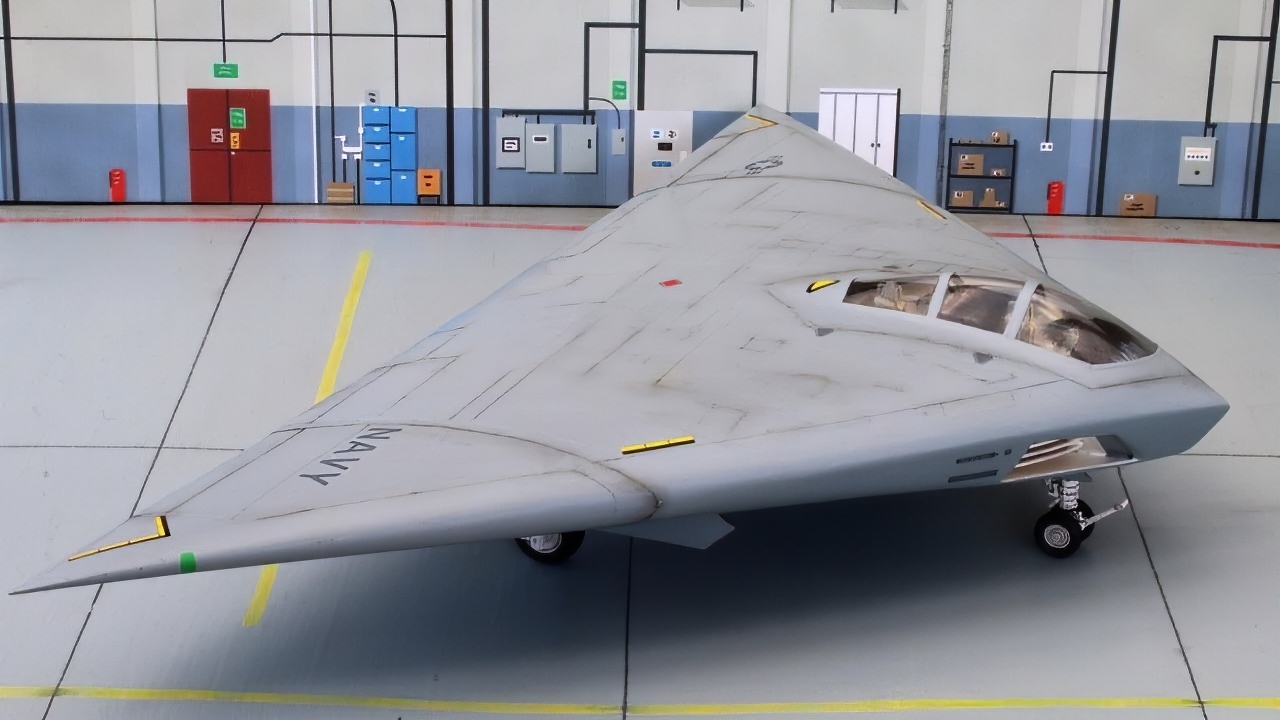Key Points and Summary – The A-12 Avenger II, nicknamed the “Flying Dorito” for its radical triangular shape, was the U.S. Navy’s ambitious attempt to create a carrier-based stealth attack aircraft in the 1980s.
-It was designed to replace the venerable A-6 Intruder, using stealth to penetrate advanced Soviet air defenses for precision strikes.
-However, the program was a massive failure, plagued by severe weight issues, technological hurdles, and huge cost overruns.
-After $5 billion had been spent, Defense Secretary Dick Cheney canceled the project in 1991, dooming the “Flying Dorito” to become a legendary cautionary tale.
The A-12 Avenger II, The Navy’s Flying Dorito
The U.S. Navy made history about 10 years ago by launching the stealthy X-47B demonstrator drone from the deck of an aircraft carrier.
But long before this unmanned combat air system launched, the Navy began its pursuit of a technological capability that would usher in a new era of carrier-based air attack. In 1983, the Air Force unveiled the first stealth aircraft in history, the F-117 Nighthawk stealth fighter. The Navy wanted a stealth attack aircraft, believing such an airframe could replace its A-6 Intruder.
The result was the intriguing A-12 Avenger II, known as “The Flying Dorito” due to its triangular flying-wing shape.
The A-12 program, a joint venture being developed by McDonnell Douglas and General Dynamics, was canceled in 1991 due to cost overruns. The cancellation came after $5 billion had already been spent. Weight issues and technological hurdles dragged on the Dorito – the thorniest issue was the difficulty of landing a drone on a moving carrier.
Meet The A-12 Avenger II:
Emerging as part of the Advanced Tactical Aircraft program in 1983 – around the same time the F-117 was being developed – the A-12 was envisioned to replace the A-6 Intruder with its new stealth capabilities, just as the Navy desired.
The McDonnell Douglas/General Dynamics team was selected in 1988 to develop the Avenger II. A competing team from Northrup, Grumman, and Vought dropped out and did not bid. The first flight was planned for December 1990. The A-12 was named Avenger II after the World War II-era Grumman TBF/TBM torpedo bomber.
Initially the Navy wanted 620 A-12s, the Marines wanted 238, and the Air Force considered 400 A-12 variants. The A-12 was considered as a replacement for retiring F-111s by the Air Force.
Intended as a carrier-borne aircraft, the A-12 Avenger II was slightly more than 37 feet long, with a wingspan of a shade wider than 70 feet. These dimensions would have made the A-12 significantly shorter than the 55-foot-long Intruder, while having a far wider wingspan that extended just far enough to allow two A-12s to sit side-by-side on adjacent catapults on a carrier flight deck.
In fact, the A-12’s wingspan would have dwarfed even the F-14 Tomcat’s extended sweep wings by a good six feet.
The A-12 did not have a large payload, however. It could carry only 5,150 pounds of ordnance, far less than the 18,000 pounds borne by the Intruder.
The Avenger II would carry two air-to-air missiles; it was also intended to arm two AGM-88 HARM air-to-ground missiles. The AGM-88 was an anti-radiation missile, meaning it could home in on the electromagnetic waves emanating from early warning radar arrays and surface-to-air missile platforms.
In terms of projected use, the A-12 Avenger II would have been able to serve in a similar capacity to today’s F-35 joint strike fighters in contested airspace. It wouldn’t have been a bomb truck like the A-6, but rather a fighter that would take out a target quickly after arriving on the scene.
A-12 Summed Up In 1 Word: Failure
In 1991, the project was canceled by the Pentagon and by former Vice President Dick Cheney. Cost overruns, weight challenges, and other technological complications were cited as reasons for the cancellation, according to Brent Eastwood.
“Cheney saw it as an expensive albatross that was getting more costly each year,” Eastwood said.
“The Cold War was ending, and maybe another bomber just wasn’t in the cards. Cheney likely considered that the number of bombers across the military was sufficient during Operation Desert Storm, and the Navy could get by with using cruise missiles. Taking all this under consideration, he requested Congress to cease funding for the A-12.”
The once-promising A-12 Avenger II program was ultimately abandoned in favor of the F/A-18 Hornet, which proved to be an outstanding, versatile aircraft.
The A-12 Avenger II was a failure, yet it paved the way for future stealth designs – possibly even for the X-47B.
About the Author:
Steve Balestrieri is a National Security Columnist. He served as a US Army Special Forces NCO and Warrant Officer. In addition to writing on defense, he covers the NFL for PatsFans.com and is a member of the Pro Football Writers of America (PFWA). His work was regularly featured in many military publications.
More Military
We Almost Touched the F-117 Stealth Fighter










